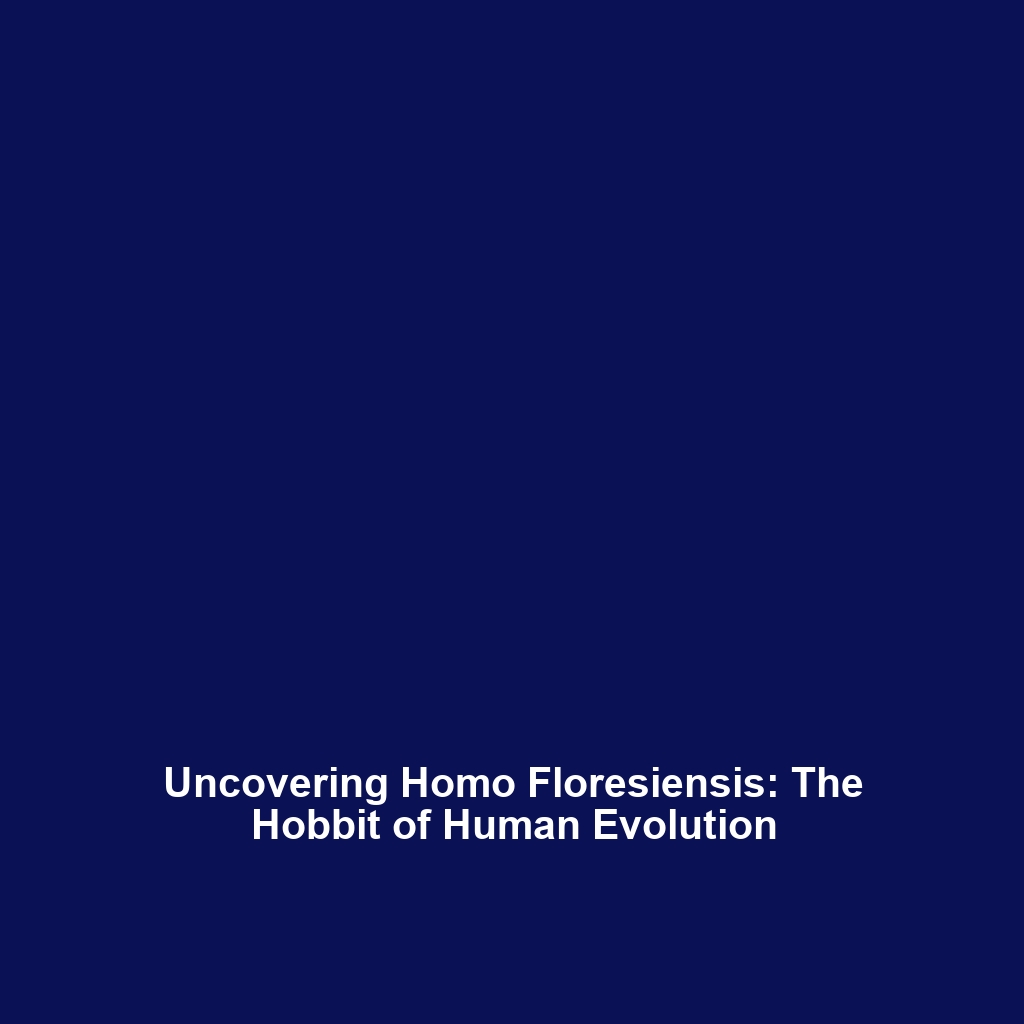Homo floresiensis: The Hobbit and its Significance in Human Evolution
Introduction: Homo floresiensis, also affectionately nicknamed the hobbit, is a remarkable small hominin species that was unearthed on the island of Flores in Indonesia. Radiocarbon dating places its existence roughly between 100,000 to 50,000 years ago. This unique species not only captivates scientists due to its diminutive stature—standing only about 3.5 feet tall—but also raises profound questions about the diversity and adaptability of human evolution. Understanding Homo floresiensis is vital for piecing together the complex puzzle of our ancestral lineage and the evolutionary narrative of hominins.
Key Concepts:
The discovery of Homo floresiensis brought to light several key concepts pertaining to human evolution:
1. Unique Morphological Features
Homo floresiensis exhibits distinct morphological traits, including a small brain size (approximately one-third that of modern humans) and unique dental characteristics. These features suggest adaptation to its isolated environment.
2. Insular Dwarfism
This small stature is commonly attributed to insular dwarfism, a phenomenon where species evolve smaller body sizes in response to limited resources available on islands.
3. Tool Use and Cultural Implications
Archaeological evidence indicates that Homo floresiensis utilized stone tools, signifying advanced cognitive capabilities in this small hominin.
Applications and Real-World Uses:
The study of Homo floresiensis provides valuable insights into the following areas:
1. Understanding Human Evolution
Research on Homo floresiensis enhances our understanding of human adaptability and survival strategies in varying environments.
2. Insights into Insular Evolution
It serves as a crucial model for studying evolutionary processes on isolated landmasses, serving to inform conservation efforts for endangered island ecosystems.
Current Challenges:
Despite its significance, studying Homo floresiensis comes with challenges and limitations:
- Incomplete fossil records hinder a comprehensive understanding of the species.
- Debates surrounding the classification and taxonomy of Homo floresiensis pose ongoing academic challenges.
- Geological and climatic changes on Flores complicate the contextualization of findings.
Future Research and Innovations:
Upcoming research on Homo floresiensis aims to address existing gaps and enhance our understanding of human evolution:
1. Advances in Genetic Research
Innovative techniques in ancient DNA analysis are anticipated to reveal more about the genetic lineage of Homo floresiensis and its relation to other hominins.
2. Integration of Technology
Next-generation technologies in imaging and dating techniques could provide clearer insights into the environmental adaptations of this species.
Conclusion:
In summary, Homo floresiensis, or the hobbit, represents an essential chapter in the story of human evolution. Its unique adaptations and evolutionary implications continue to intrigue researchers and enhance our comprehension of the diversity of our ancestral heritage. To learn more about other hominin species and their roles in human evolution, explore our articles on Neanderthals and Australopithecus.
